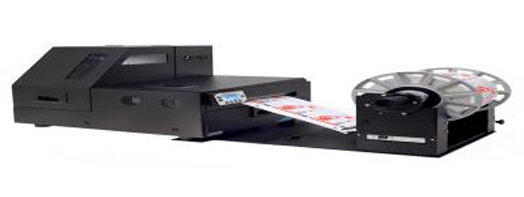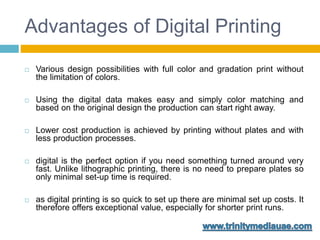The smart Trick of 24??media That Nobody is Discussing
The smart Trick of 24??media That Nobody is Discussing
Blog Article
Some Known Incorrect Statements About 24??media
Table of ContentsNot known Details About 24??media The smart Trick of 24??media That Nobody is Talking AboutUnknown Facts About 24??mediaThe Ultimate Guide To 24??media24??media Can Be Fun For Anyone
Offset, gravure printing and flexography are one of the most common kinds of conventional printing in the packaging room and each involves transferring the picture from a plate to the surface area. To do this, first the plate needs to be developed, and it is the production of these plates that take some time, and cost cash.According to PMMI, digital printing allows brands and manufacturers to respond swiftly to client needs while enhancing the supply chain, reducing warehousing expense and waste, and enjoying faster time to market. That all audios excellent, however how does this technology do all that? The significant differentiator of these modern technologies is that there are no set-up costs and no plates with digital printing.
According to Wikipedia, the best distinction between electronic printing and conventional approaches such as lithography, flexography, gravure, or letterpress is that there is no need to replace printing plates in digital printing, whereas in these analog printing techniques the plates are continuously changed. This results in quicker turnaround time and reduces price when utilizing digital printing.

Digital printing is extremely flexible, so it's very easy to make adjustments to the bundle layout quickly. It all goes back to the plates.
The Main Principles Of 24??media
More supply can imply even more waste down the roadway. With conventional printing approaches, short-run printing is just not possible. Since a fantastic layout can make or break your product, electronic printing constantly develops top notch, clear and colorful graphics each time. Digital printing on versatile bags adds the intense, vibrant, and specific graphics that practically bid consumers to connect and touch them.
Packing ... Are you acquainted with the advantages of digital printing? Both balanced out and electronic printing have their place in the printing market.
In this article, we will go over the benefits of electronic printing to aid you better understand if digital printing is just what you need. Basically - digital printing prints material straight onto the paper. It eliminates some steps needed in offset printing, like creating metal plates. Inkjet printers use little nozzles to spray beads of ink onto the substrate.
The smart Trick of 24??media That Nobody is Talking About
As digital printing continuously evolves, it provides a lot more opportunities and higher outcome quality every day. In some instances, the print quality can be as high as to counter printing.
For balanced out printing, if any kind of error goes undetected prior to developing home plates, there will be a high price of producing a brand-new one. But, with electronic printing, this is not the situation. Everyone always hopes there will certainly be no blunders, knowing the expense of correcting them if they occur is constantly a good idea.
This suggests each and every single item will certainly look the same, so the possibility you will need to throw out any one of them as a result of variances is reduced. Additionally, because a proofing sample is printed on the exact same maker as the item itself, shade proofing is really accurate. Any kind of troubles with color will be visible on the proof, and hence it will certainly be feasible to transform it prior to printing the whole run.
Little Known Questions About 24??media.
Digital printing, on the other hand, requires minimal setup. There are much less pre-press procedures, so the initial arrangement time is dramatically minimized. As a result, turn-around is significantly faster. Your order can be refined as quickly as you send it. This is great when you remain in a hurry to get your published materials.

This implies more ask for electronic on-demand print manufacturing. Every customer appreciates a personalized message. Among the benefits of electronic printing is that personalizing your marketing products couldn't be easier. Cost-effective, smaller sized batches allow businesses to tailor each order. Have a back-to-school sale? Make a leaflet to target moms and dads and Home Page another one to target the trainees.
Digital printing is the perfect option for variable data printing, like custom codes and addresses on direct-mail advertising. With electronic printing, it is less problematic to make last-minute changes to your design. Often the ideal form of interaction is not digital. In these cases, counting on digital printing can guarantee these orders have a marginal ecological impact.
Not known Incorrect Statements About 24??media
There is likewise no demand to clean up the plates after printing. The advantages of digital printing include that there is no waste from extra or leftover ink, paper, or chemicals since only what's needed gets published. - for very short runs, electronic printing is the means to go, undoubtedly.
Gone are the days of intricate arrangements and lengthy turnaround times - electronic printing has actually changed the print industry. The printing world has actually come a long means given that the days of Gutenberg's printing machine. The brand-new regular is structured procedures and economical solutions for printing onto virtually anything you can think about.

Report this page